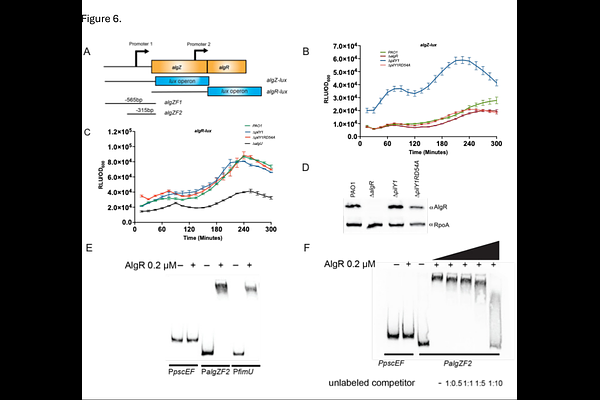Defining the role of Pseudomonas aeruginosa PilY1 in signaling and virulence

Defining the role of Pseudomonas aeruginosa PilY1 in signaling and virulence
Pritchett, C. L.; Damron, F. H.; Barbier, M.
AbstractPseudomonas aeruginosa (Pa) is an important opportunistic pathogen that has many virulence factors expressed in a coordinated manner to cause infection. External appendages, such as the type IV pili (T4P), can be used for signal transduction changing gene expression using a mechanism termed mechanosensing. An important role for the minor pilin, PilY1, is to signal that the bacterium has attached to a surface such as a host cell. This mechanosensing is important for triggering changes in bacterial gene expression allowing colonization of host tissues. In this study, we identify new PilY1-controlled genes and demonstrate the importance of PilY1 in controlling second messengers, including cAMP. Genetic analysis showed that PilY1 is important in controlling cAMP levels by regulating the expression of the main adenylate cyclase, cyaB. PilY1 also controls the expression of PA4781 a putative cyclic di-GMP phosphodiesterase. PilY1 also controls the expression of the algZ/R operon by preventing autoregulation of this system. Furthermore, the minor pilin PilY1 functions in different P. aeruginosa strains, including mucoid strains, demonstrating conservation of function. Surprisingly, bacterial survival in the lung, liver, and blood did not require PilY1. Overall, these findings suggest that PilY1 is critical for regulating second messengers by preventing the AlgZ/R system from functioning. Our work provides insight into the mechanisms that P. aeruginosa uses to modulate second messengers which are important in biofilm formation and virulence.